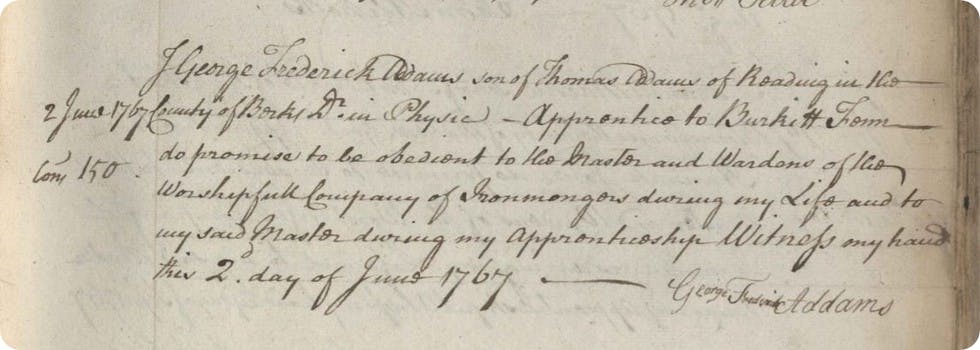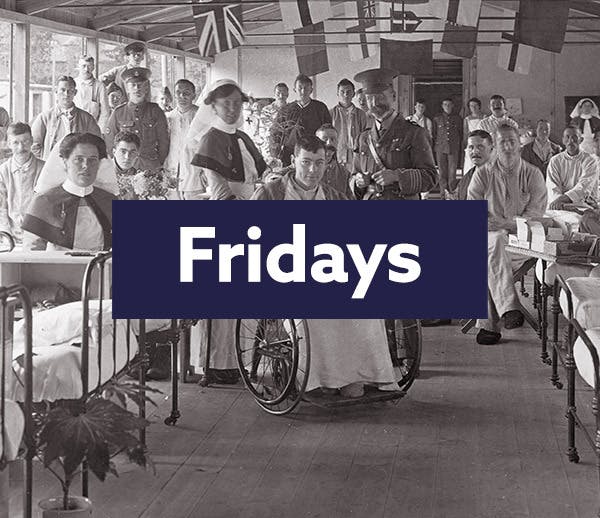How to Use Apprentice Records for Genealogy Research
5-6 minute read
By The Findmypast Team | September 28, 2016

With modern technology and industrialization, apprenticeships aren't as common as they used to be. Chances are if your ancestor had a profession such as a silversmith or printmaking, like Benjamin Franklin, your ancestor had a rigorous apprenticeship. Apprenticeships are different from traditional schooling and education because they teach the apprentice, or the person looking to become this particular profession, the skills they need to become a master at the trade or craft through hands-on, real working experience.
Historically apprentices learned the trades by assisting master craftsmen and craftswomen with the job at hand for many years. In Great Britain, for example, it was the law until 1814 that an apprentice was bound to a master for 7 years, which meant that the apprentice couldn't leave or break the bond themselves unless The Justice of the Peace intervened. In Great Britain, it was also the law that an apprentice would be bound to their master until the age of 21, so that meant that some apprenticeships actually lasted more than 7 years if the apprentice started at a very early age, which wasn't that uncommon.
The nature of apprenticeships varied from person to person and trade to trade, but it wasn't uncommon for a son to be an apprentice to his father or uncle, for example, and for a particular craft or trade to be passed down the family. Sometimes apprentices were forced to run away to escape their apprenticeship, so the experience of the apprenticeship depended entirely on the master. Keep an eye out for those instances in the records.

Found in Sheffield Iris January 9, 1838 newspaper
Having this knowledge can help you with your genealogy research because when you look into apprenticeship records you may see the master listed and it is possible that the master is related to your ancestor, so pay close attention to those relationships when researching apprentice records.
One key document that you may or may not find in your research is the indenture, which is a contract that states the details of the agreement between the parents or guardians of the apprentice and the master. It also usually states the premium the master charged for the apprenticeship. The premium is the amount that the parents or guardians paid the master for his services of taking on their child or dependent into an apprenticeship. In 1709, The Stamp Act required that the apprenticeship premiums be taxed so apprenticeship records were mandatory between 1709 and 1811, so you will likely find your ancestor's during that time period if they were an apprentice then.

A copy of the indenture
What specific details you can learn about your ancestor in the apprentice records will vary from record to record, but it is important to keep them in the back of your mind when researching those particularly vague ancestors because you never know if they were an apprentice at some point!
You can also search the records by master, so if your ancestor was a particularly talented blacksmith, for example, then chances are he/she may be in the apprentice records listed as a master, so don't forget to check for them as well.
Here are 3 key details that you can find in apprentice records that will help you with your genealogical research:

Found in our Devon, Plymouth & West Devon apprentices 1570-1910 record set
On the indentures, often the occupations of the parents or guardians are listed, which may help you overcome brick walls you're facing with information about your ancestors where records might be less frequently found. Not all apprentice indentures will include this information, but be sure to check the images provided, if applicable, to gain more information from the transcriptions alone. If you're intimidated with reading old handwriting, do not worry, you can view the original image and use the transcription as a guide to help you through it. If you look at the example below, the transcription lists the apprentice, George Frederick Adams and the father is Thomas Adams, and the parent's occupation is listed as Dr. in Physics, so you can use the transcription to help you navigate the original document because some of those documents from the early 1500's and 1600's can be very tricky to decipher.

Found in the City of London, Ironmongers, apprentices and freemen 1511-1923 record set

Found in the City of London, Ironmongers, apprentices and freemen 1511-1923 record set
The indenture year listed can help you potentially pinpoint the date of your ancestor's birth or provide you with a more narrowed range. If most apprenticeships lasted approximately 7 years, and until the age of 21, then you can use these two figures to help narrow down your ancestor's age, although do be careful with this information and find your original sources to support your estimations. If the apprenticeship ended after X number of years, then you can estimate when the apprenticeship began. For example, if your ancestor was only 10 at the time the apprenticeship began and the apprentice records indicate that your ancestor was an apprentice for 11 years, a long time for an apprenticeship, you can take 21-11 to get the approximate age of your ancestor. So, if you have one ancestor whose apprenticeship lasted only 5 years, there's a possibility that your ancestor was 16 when the apprenticeship began. Although, keep in mind that your ancestor may have run away from his or her apprenticeship, which would also be the reason it ended earlier than expected.

*Please note that the highlight was added as a tool to see the age in the record, it won't appear in the original images.
If you suspect that your ancestor may have run away from his or her apprenticeship, then chances are that the newspapers covered it. Be sure to do a quick newspaper search of the time you think your ancestor may have made a run for it and search "runaway apprentice." These notices will often reveal your ancestor's name in full.

Found in Western Courier, West of England Conservative, Plymouth and Devonport Advertiser March 22, 1837
Ready to see if your ancestor was an apprentice or a master craftsman?




